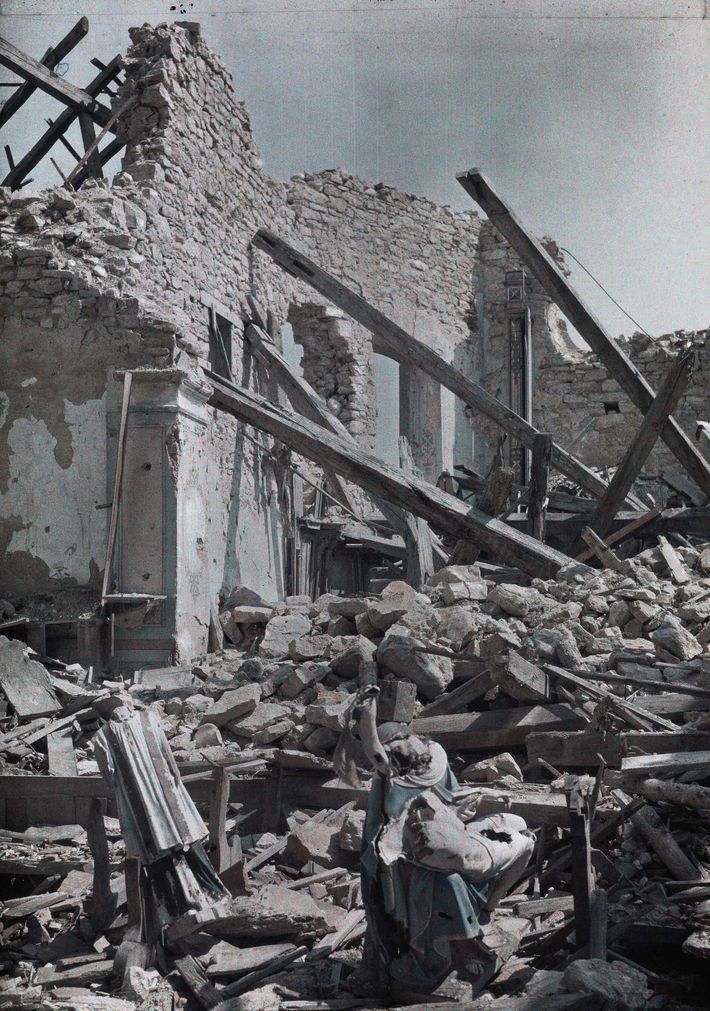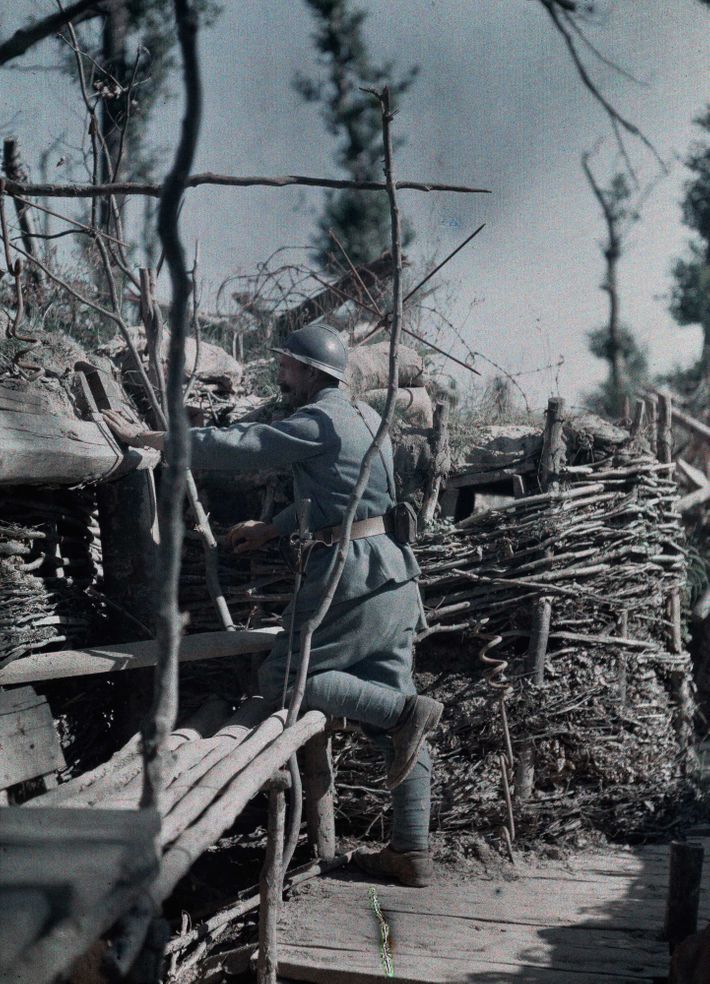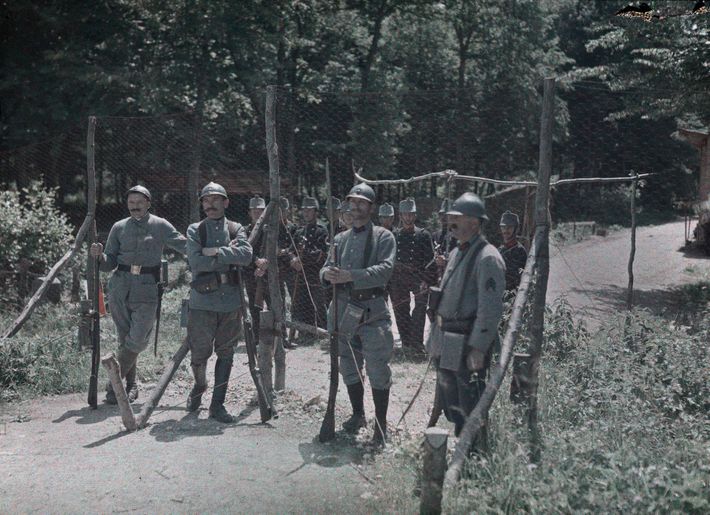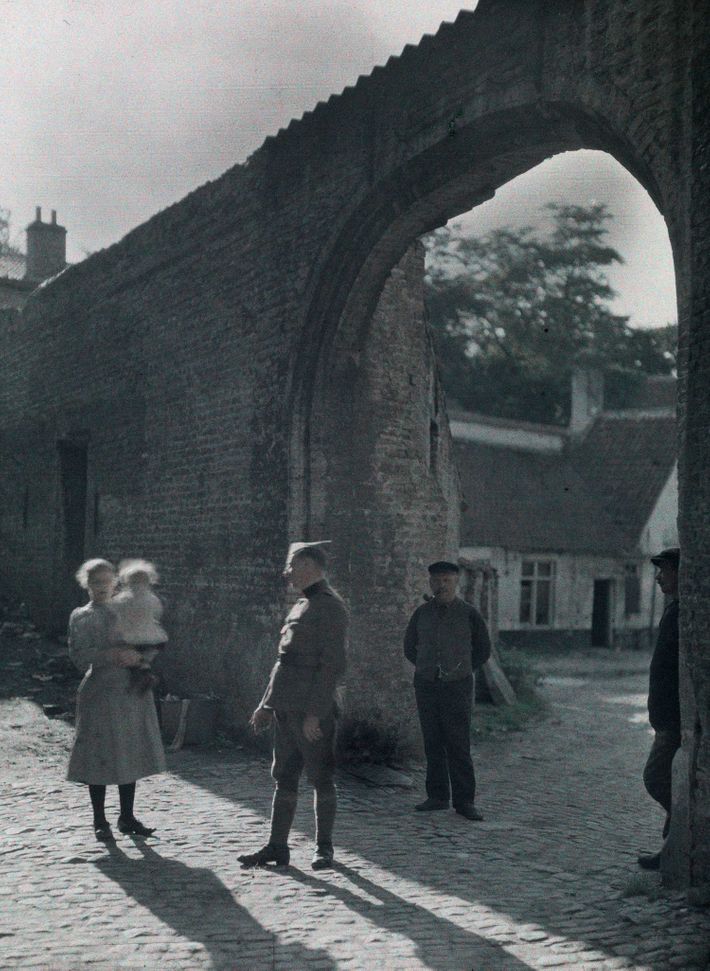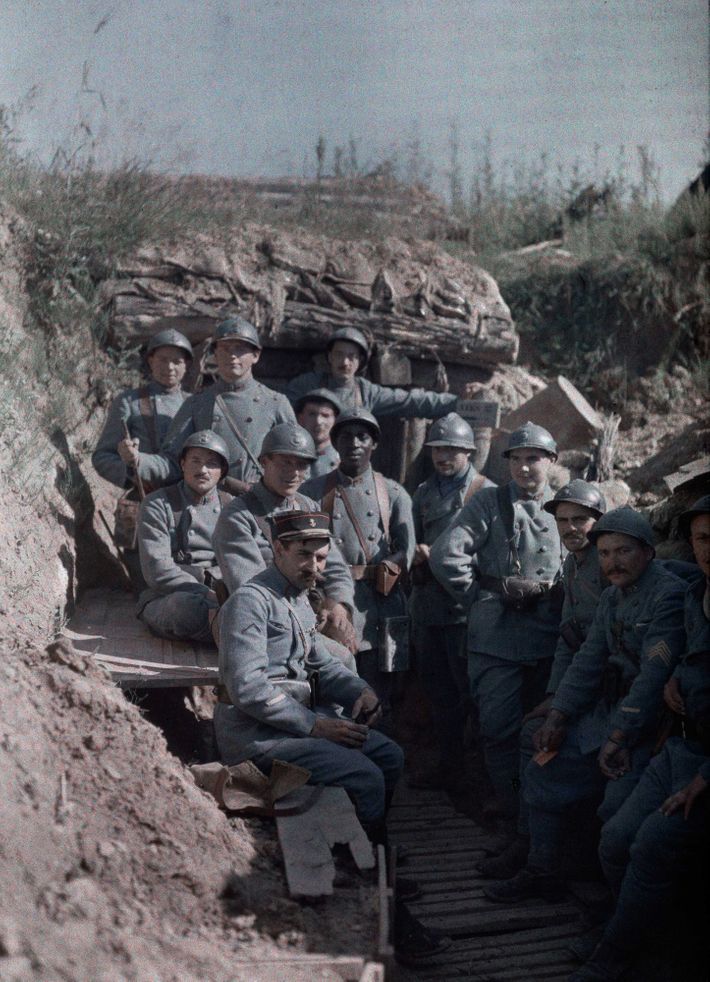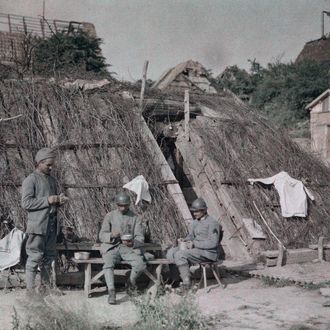
Photography is older than you might think — there’s a picture of the French countryside that can be reliably dated to 1827 — and color photography, too, is a surprisingly early technology, having first been demonstrated in the 1860s. Still, many of us see the pre-baby-boomer world in black-and-white, which makes these photographs completely arresting: color pictures of the First World War, which began a century ago today with that infamous moment in Sarajevo. These are not hand-tinted black-and-white pictures like postcards of the era; they were shot that way, in the camera.
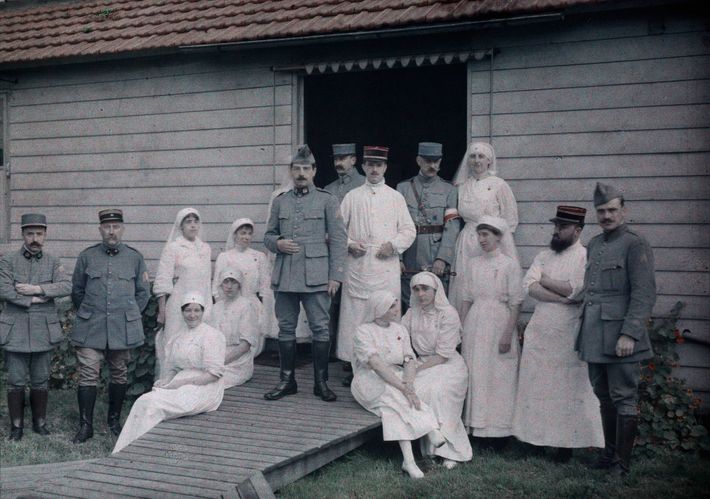
They were made with a technology called Autochrome, invented in 1903 by two French brothers, Auguste and Louis Lumière. (They also made movies, including this one from, incredibly, 1895.) Their color system, first sold in 1907, was surprisingly refined for a first try. The photographic emulsion is overlaid with specks of potato starch, dyed red, green, and blue, and both were coated on a glass plate. Once developed, the photos are not printed; you view that glass plate on a lightbox, like a slide. The Autochrome system was not experimental but commercially available, and it was quite successful. Anyone willing to learn how could go into a store and buy a package of Autochrome plates and shoot color photos himself. National Geographic was an early adopter, and ran color pictures of wildlife throughout the teens. Coincidentally, Autochromes often look like French paintings of the period. The grains of dyed starch give the image a speckled pointillism much like post-Impressionist painting. The soft colors, tending toward a tawny palette, are rather painterly too.
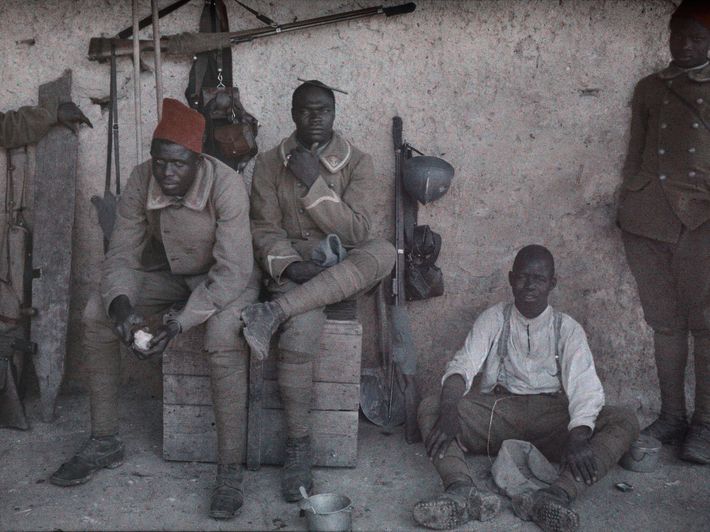
The war was a major photographic subject, of course. It was the first event to which many newspapers gave substantial photographic play, notably the New York Times, which had just launched a section called the Mid-Week Pictorial. And because the conflict was playing out right there in France, the Lumières’ plates soon made their way to the battlefield. There are hundreds of Autochromes of the Great War, many of them preserved by the French national library. Most are still-lifes, of shelled buildings and the like, owing to simple technical reasons: Autochromes required a lot of light, so the exposures are slow, and people don’t hold still. But a few do include soldiers and villagers, and it’s almost shocking to see the French blue of the uniforms — not to mention their fastidious tailoring, which you would be unlikely to see in the field today. Without the distance of sepia tones, these faces — their mustaches aside — somehow seem far more modern. (There’s an extra layer of humanity in the 1917 photo below that shows black and white faces in one trench. The black soldier is likely from Senegal, then a French colony, and god only knows what he felt he was fighting for.) They faced the worst weapons of mass destruction that could be conjured at the time, in the form of mustard gas and machine guns. Every one of these pictures captures the best and worst of human invention: one technology used to maim, another meant simply to record history, beautifully.
